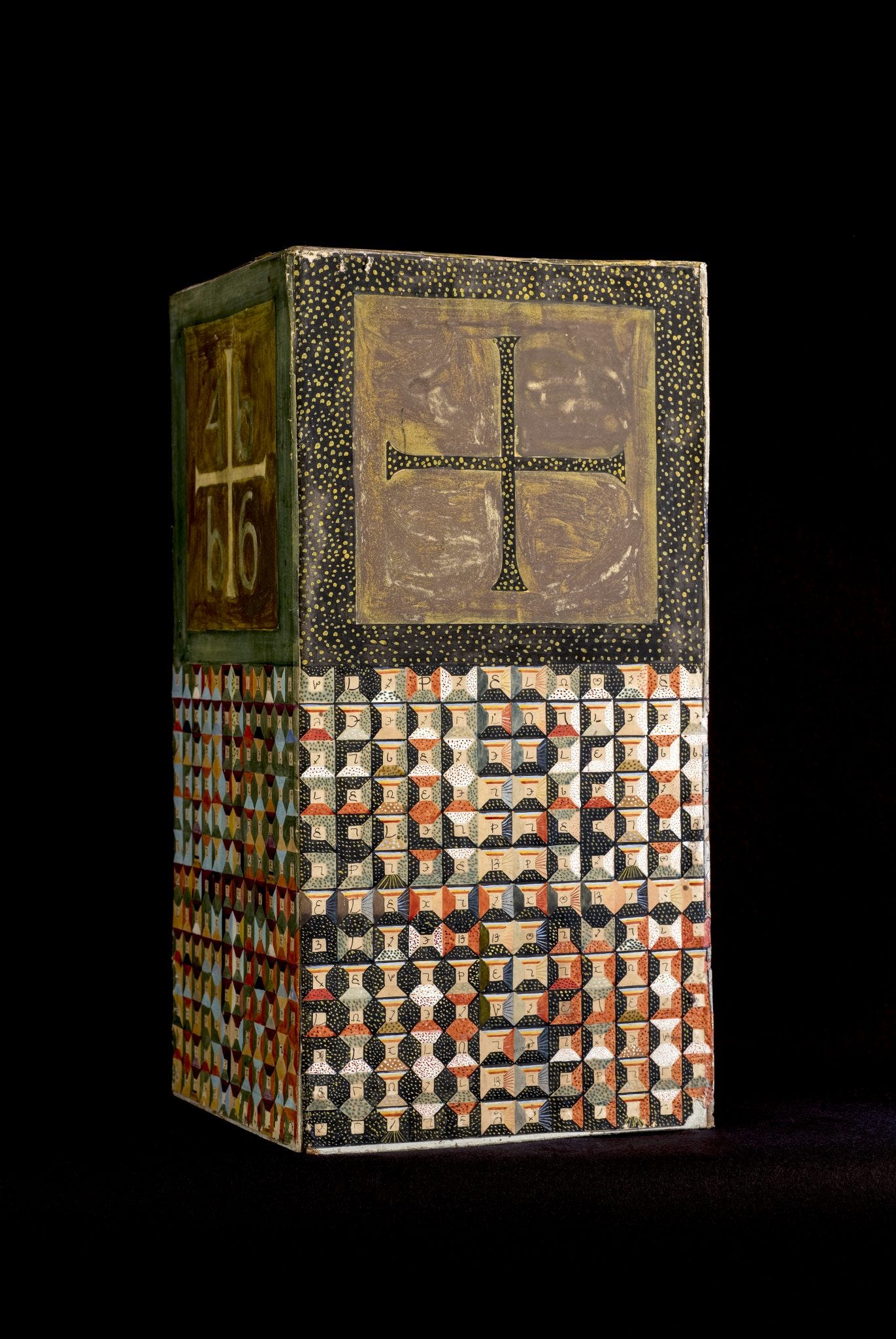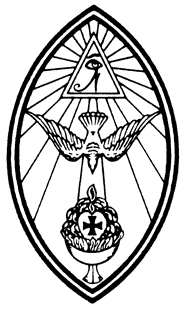Prequel
There is a world reflected in the broken glass, a world daubed with crooked crosses and Stars of David. Synagogues burn, cemeteries are smashed, shops looted by the Stürmabteilung and an exhilarated Hitler Youth. Hundreds of Jews are murdered and raped, many others commit suicide. Berliners weep in the streets whilst the churches, for the most part, keep silent. The regime has taken the definitive step that will lead to the death camps and final solution.
Her family left Berlin with what they could carry, and England took the grateful refugees. For the fifteen year old German Jewess, London was an alien city and her speech sounded suspiciously foreign, as did her name. She spent more time drawing, and with paper in limited supply, her style became ever more careful. Sketchbooks were meticulously filled. Even as the enemy soiled London with their incendiary bombs she drew her way through the chaos.
She studied art at Regent Street Poly, appreciating the ‘degenerate’ art that the Nazis despised. She loved the Surrealists in particular. More time was spent sheltering in the basements than in the studios, but Steffi was alive.
In 1941 she met an obsessive young man with a deep appreciation for art and spirituality. He just walked into her class. A few years older than her, Kenneth was recently discharged from service, and his pallor attested to an ongoing convalescence, as well as his employment in the book trade. His dreaming was deeply veined with the macabre, lending to his youth a seriousness and a certain suavity. She agreed to let him take her out to see The Wolf Man at the Odeon in Leicester Square. They kiss in the dark. They drink together at the Café Royal, as artists do. Soon they are married.
The Mandala of Blood
In 1950, the 24 year old newcomer John Makaula-White guns his Triumph 500 at Hadley’s Corner, twelve miles into the rain slicked course. Droplets on his goggles, he misreads the approach, clips the massive stone wall of the bend with his front wheel and causes the bike to switch out under him. He hits the opposite hedge and is shot straight up, machine and all. Gauntlets torn from the bars, his pudding basin helmet proves inadequate to absorb the kinetic forces he has unleashed. The following day on the lonely mountain road chicanes of Keppel Gate, young Alan Westfield loses control of his Velocette 350. The practice run ends his nineteen years of life as he scuffs over the asphalt and abruptly strikes a stone pillar at race speed.
The Isle of Man TT is a mandala of such deaths and victories over death. It asks of its competitors something extraordinary, and gifts them with the purest sense of wild riding on roads emptied of traffic and lined with crowds. The men know the risks, taking destiny in their hands, understanding that life is being present, riding at the limit of skill, surface and engineering. Only one year has passed in its history without a life being taken. The newly sanctioned World Championship status of the race brought several film crews this year. Neither death will make the final cut.
Cecil Williamson carefully observes the machines in the pits and backstreet lockups, the racers standing apart, sipping cocoa swaddled in their leathers and bravura. Each replays in his mind the lines, the compressions and blind rises. They are a closed black circle, privateers and team racers who meet only when they compete, and quietly note who is no longer present. Their lives are found on the track, in shaving seconds, in an unquenchable desire to win. A man is but a moment in time. No thoughts can intrude when you lay over and commit to a turn, thighs tight against the tank, knee skimming the road surface. The crowd witness that you are present, and then you are gone.
A film director by trade, a spy by inclination, Williamson knows that heroism will always pull in a crowd. He shoots the feature Trophy Island, and gives the tourist industry what they want in return for ready cash: young men, dressed not so differently to fighter pilots, doing something remarkable, and yet attainable for those who dare. It is shot against the background of an unspoiled postwar idyll. England is imagining itself again on this bubble of rock in the Irish sea, far from bomb-cratered London. The mood is optimistic, the society of leisure looks out to the Celtic fringes to find what was lost in the War. It sees an enduring world of magic and superstition, and leans forward to glimpse the indomitable human spirit bound to its Promethean machine and streaking into the future.
As the race and its circus move on, the season proper begins; Williamson lingers. There is another time signature, a mythic one, over which the racers flow. The Isle of Man is a place of archaic customs and vestigial beliefs – even witchcraft. There are a trove of stories waiting to be swept up at the crossroads and told anew. It is these darker and stranger currents that Williamson is loyal to.
High above Castletown he finds the set he has been searching for, a great dilapidated flour mill with an imposing grey stone tower. Here he can stage all the charms, stuffed crocodiles, demon masks and bric-a-brac he has amassed. Williamson promptly sinks his savings into the dilapidated property.1 It will be his second witchcraft museum. A short-lived attempt in London saw him run out of town in what will become a repeating pattern. For now the spider can carefully weave his web, and continue the witchcraft research he did for MI5, now for his own personal ends.2
The granary is re-beamed. The tower stands baleful and open to the sky, gazing from mute black windows. The suggestion is that witches would gather to dance here, and that is of a species of truth. In Castletown in 1617 they did burn Margaret Ine Quane and her son at the stake in Market Square. Gardner will in particular leverage that tale. But truly, the Mill has no connection to historical witchcraft.3 It is an empty structure which will accrue meaning, becoming a beacon for neopagans who will offer to the world a religion that never really was.
Williamson smashes out exhibit labels on his Imperial typewriter fast enough, but he needs to fill the cavernous space with sufficiently compelling exhibits to furnish his wife’s tearoom with paying customers. He imagines them spilling out of coaches from Douglas like so many silver herrings.
He has an accomplice for the project, the now wizened, but not necessarily wiser, Gerald Gardner. Nudist hijinks aside, at sixty-six his health is failing, but he has birthed a late book, High Magic’s Aid. Crowley apparently approved of this tosh, but we only have Gardner’s word for that particular endorsement. The book was printed by Michael Houghton of Atlantis in 1949, Gardner having stumped up the cash, but it just didn’t sell.4 On the cusp of the repeal of the Witchcraft Act, Gardner’s fictional account had a threefold purpose: to not spill the beans on his witchcraft group; to stay within the law; and to recruit curious readers into the cult.5
The resident witch would typically lead tours of the museum, and when they were suitably enthused by Cecil’s dramatic displays he would make his sales pitch. The books sat in an unsteady pile in the restaurant with a gnomish Gardner peeking out from behind them, pen at the ready. At other times he would pose stiffly as a waxwork in one of the exhibits and then come cackling back to life. He delighted children. The Manx people warmed to his eccentric ways.
As Williamson toils on the building through the winter rains, Gardner is off in warmer climes, but promises to provide tools from the Southern Coven to display. He ships over a set of objects purportedly owned by Witchfinder General Matthew Hopkins, and his personal collection of knives, crossbows, suits of armour and sundry other treasures. Williamson still needs an exhibit to be placed the heart of the museum. What he decides upon is an authentic magic circle, but where could one obtain such a thing?
By March of 1951 Williamson has formulated a plan for a ritual magic room containing what he proclaims as ‘Dr Dee’s circle’. But it is not John Dee’s, rather it is Aleister Crowley’s, cribbed from Gardner’s copy of Magick in Theory and Practice. Gardner writes out the angelic conjurations for the display in his extravagant hand, but the Enochian altar is more complicated, and thus beyond the capacity of either man. The top of the altar precisely depicts the Vitruvian Man in imperishable gold. The sigils of the Elemental Kings are simple enough, but the four sides of the altar also bear the elemental tablets, an hundred and fifty-six pyramid cells apiece, three thousand one hundred and twenty faces in total, each individually coloured and inscribed with its Enochian letter.
Williamson writes to Gerald Yorke, Crowley’s literary executor, enquiring after someone to paint the altar and plot the circle in the correct colours. Yorke agrees to help, and puts him in touch with a talented artist with the requisite magical pedigree, one Steffi Grant.
Williamson corresponds with the Grants, and Steffi works to produce both the full size altar, and a smaller model, along with wall hangings and Golden Dawn ritual tools. All are completed by mid-April. She has made a sustained artistic and spiritual effort to meet the opening date of May 13, Whitsun and the lucrative Bank Holiday.
These are live magical objects, and the altar is designed specifically for Williamson’s measure, as the picture above plainly shows. The stature of the man provides the height of the altar, and the altar’s base provides the size of the tau cross, the tau then determines the minimum size of the circle. This follows Crowley’s instructions to a tee. In his chapter ‘The Circle’, Crowley writes on the physiological basis of the altar, and further observes that ‘the scope of any man’s work depends upon his own original genius.’
Cecil has therefore made the museum an expression of his genius. In doing so he stands in a line of transmission that stretches from Enoch to Dee and to Crowley via the Golden Dawn.
The circle does not use the Thelemic magical names, perhaps to avoid controversy, but has the Hebrew god names from the Key of Solomon as per Steffi’s drawing (below).
The room is a ritual stage, set with candles and hung with heavy velvet curtains. The walls are arrayed with the flashing colours of a Rose Croix, an Eye of Horus in hot pink, a Tree of Life, a black calvary cross, an imposing Greek Zodiac cross with its knotted serpent, the designs from the ceiling and floor of the Vault of the Adepts, and the seven Planetary Seals. Steffi has been exacting in her work. Gerald Yorke writes an extensive guide for visitors, relying on Crowley’s texts for authority. Finally, Cecil can admire the spectacular room in the hush before opening day.
Williamson publicises his plans through the local press:
It will be a live show, not a museum or waxworks. Dr Dee’s circle will be reconstructed and witches will come to the island to endow it with power.
Cecil as entertainer was set on performative ritual, but a disgruntled Yorke would not countenance being part of such an enterprise; nor would Gardner and his small troupe.6 Cecil’s desire to put on a show was out of step with the requirements of secrecy required for both ritual magick and witchcraft. The snub, particularly from Gardner, is a sign of tensions that will soon destroy their partnership. Ironically, Williamson ultimately retreats into secrecy behind the sort of waxwork displays he dismisses here.
The museum opens with a cursory ceremony in the circle performed by Gardner and three acolytes for the viewing public. But magic functions in its own way, unfolds according to its own logic, apart from watchful eyes.
Williamson promises to pass on contacts who are inspired by the display to Kenneth Grant. In return Kenneth agrees to compose a document, a manifesto, to outline the aims of the new group he intends to lead. Kenneth struggles with it, but by July of 1951 delivers the text for a small pamphlet to be passed to promising aspirants. Williamson prints it up at the close of the season in October. He does so in lieu of payment to Steffi, and finally ships copies to the Grants in March of 1952. These events inextricably link Enochian magic, Cecil Williamson and his Folklore Centre of Superstition and Witchcraft with the nativity of the Typhonian Order. The document Kenneth writes is the infamous Manifesto of New Isis Lodge. It marks a critical moment in the history of magick and the destiny of Crowley’s Thelema. Under the official seal of the Ordo Templi Orientis, an explanation of the grades and obligations of membership is prefaced with a startling revelation:
A new and compelling influence is enveloping the earth and as yet there are few individuals who are open to the influx of the subtle vibrations of this influence. Its rays proceed from a source as yet unexplored by those who are not at one with it in essence and in spirit and it finds its present focus in the outer universe in the transplutonic planet Isis.
In the inner being of man, also, this influence has a centre which will slowly begin to stir in mankind as a whole as the influence strengthens and flowers. As it is at the beginning of its course in relation to man, however, many ages will pass before he may avail himself fully of the great powers and energies which this influence is silently and continually bestowing on all who know how to identify the inner core of their being with its deep and inscrutable heart…7
The New Seed
Williamson is entranced with his magic room, and it seeps into his dreams. The colours flash behind his closed eyes. With no actors to perform the angelic rites, the forces latch onto Williamson himself. He has ensured it, by tailoring the temple to his own measure. A series of visionary communications come through over the next twelve months, unasked for, unsought. The transplutonic current has found him out. These events are quite out of character for Williamson, and he confides them to the one person he believes can help, Gerald Yorke, one time disciple of The Beast. Two letters survive in the Warburg Collection, and they are transcribed below.8
August 1 1952
Dear Gerald Yorke,
You no doubt knew that this letter would be written. We both know it had to be. So it is that I am happy to report that the first stage of my mission is now completed. The ground is now cleared – tilled – prepared and ready for the sowing of the “New Seed”. You are one of the Keepers of the seed – The Keepers are Seven in number.
The “Yi King” indicates you as the giver.
The “seed” is the work of Crowley.
Personal Note
No one is more amazed than myself that I should find myself in this position. Frankly I could wish that it had fallen to the lot of another. But some unseen and strong force fast carries one along. The whole complex and apparently unconnected scheme of my previous life now seems to be falling into one clear and concise pattern. The last manifestation indicated Seven Keepers. All are to play a part. Many are hostile but enough of all that and what the foretold future holds. Only let me say this. I have tried to wash away any thought of Crowley and his works from out of my mind – Result, instant trouble. No matter what I did or do – Always I am sent back again to work for this end. So being I hope a sensitive fellow, I have now had the wit to see that it is I who now has to do something about all this. It is shall we say – just one of those things unsought for, but nonetheless it has to be done. Why, don’t ask me. As yet I am completely ignorant of Crowley and his works. True I have read part of two of his books but that is all.
Well you may think all this high fun – me something of a screwball, and the only value of this letter another quaint exhibit in your already vast collection of looney letters – or will you?
So simply will you help me preserve the true work of Crowley. Yes or No.
Yours Very Sincerely
Cecil Williamson
August 7
Dear Gerald Yorke,
Many thanks for your prompt reply, I quite understand your point of view. You ask “what do I plan to do?” Briefly I set myself two tasks one active the other passive. The latter merely amounts to collecting all and every sort of item connected with Magic, Superstition, and Witchcraft. The former is a much more serious affair the building up of a small group for the examination and practice of a certain form of work. But not Cabbalistic Magic in any shape or form, whether spelt with a K or not.
When I came to you I was on my chase for general information. I have been to many other sources. Both here and abroad, Like you I hurry slowly. Also I endeavour to keep a clear head and both feet firmly on the ground. No drugs feed me!! In time my methods all along are slow – sure and deliberate. The formation of this ‘shop window’ was deliberately planned to act as a magnet to draw to one those interested. The place was chosen because it suited my overall plan. So it is that now a year has passed. I look back and see the results of my efforts. These one time and somewhat extensive ruins are now well on the way to reestablishment. The restaurant is well established. The Museum and Exhibition call it what you will is launched and as such is successful. In short then the entire project is underway and in being, so far so good. Now I turn my face to the near future, and fix my course for the next twelve months, obviously a great part of the time ahead will be taken up with consolidating what one now has. That must be so. But also time must now be given to forming the group and conducting its work. This calls for much care and will or should not bother anyone outside. But here is the quaint point. In one way I couldn’t care less about A.C. But in another he or his shade or his coincidence has been haunting my path. The Blighter, Bless him has an odd way of butting in all the time. At first I just put it down to one of those things. He was a big dog in his day in this line of country and so it was natural that he should have left some influence. As I say for my part he was dead and gone and his name In able and for all I knew loving hands! At least they knew him and his affairs backwards. Myself 100% ignorant of most of his ups and downs. The details are too many of the odd little incidents to attempt to give you them. Let me only say this. I’m gathering (details of which I will not burden you with) this message came through – quite uncalled for as one was engaged upon other work. So it came as little less that an interruption. Here let me say it has nothing to do what so ever with spiritualism. I run a mile from all that phoney mumbo-jumbo. No we were just about our own work when as I say this intrusion came upon us. Briefly it amounted to “Consider me. Seven hold the Key or seed in the shape of my work – seek amongst it and you will find the seed which planted in your ground will bring forth great results.” Well at the moment I fail to see how as there is no common ground as far as I can see between A.C and my line. Then again I know nothing of his work so maybe I am just the Blind one.
So there it is. You ask what do I plan. My dear fellow I know no more than you do what is wanted. I have no wish to be a second A.C or anything like that. Only do I consider a thing when it is thrust so plainly under ones nose. As to the other Seven or I should say six these were given in riddles. I took you to be the one styled under the sign of the Rose. Maybe I am wrong. I repeat the whole thing seems a bother and one unasked for. But I am game to play heed so that one at least can lay this thing. Now what must I do. As instructed search. That means ploughing through his work. You kindly say that you will help if you understand and can since then a search is forced upon me. Then from what reason??
My only guess is that we are now working on formulation our groups rituals ( a bad word that) rather shall we say methods of working to produce results. There is a mass of material it needs so much pruning and getting into order. How is it that in this work we are treading a path once trod by A.C and maybe abandoned. A.C was a great writer by all accounts. So I don’t want to waste time with all his twists and changes. I feel somehow that he was at his best (or was it worse?) When Sicily. So can you loan me any of his writings giving the form and wording and methods of operation as used in the so called Abbey of Thelema. Also could you loan me the copy of Abramelin. I need hardly say that these will be treated with infinite care and returned to you with least delay. Seems to be a real caser of the Blind leading the Blind but I can only do my best and I have had enough prods in the back to make even a prize A idiot see that something was wanted.
Many thanks – maybe you can throw some light on the whole thing. Do you think he wants recognition as a mile stone? Or what?
Yours very sincerely
Cecil Williamson
This first cryptic letter demonstrates that the project of the museum is tied up with the continuation of Crowley’s work. Williamson has some kind of spirit contact, and is using Yi King to confirm the cryptic messages. I leave it to my readers to ascertain which hexagram he cast here, perhaps 7 or 64? As to the identity of ‘the Seven’ we can definitely count Williamson and Yorke, leaving five other ‘Keepers’. I suggest Kenneth and Steffi Grant, Frieda Harris and perhaps Karl Germer; the final name is harder to ascertain, it may conceivably be Gerald Gardner.9
The first Yorke letter is particularly useful in that it disproves Williamson’s later claims to have visited Crowley during his final days at Netherwood in Hastings, and the provenance of the objects in the museum collection that he later ascribes to that fictitious meeting.
In the second letter Williamson seems genuinely perplexed. There is a secret for him to winkle out, and a new operative magick to explore. I assume he uses the royal ‘we’ here, as I can find no evidence that he pursued this work with any other individuals beyond those that peopled his imagination.
Two months later, in October 1952, there are guests on the island. Gerald Yorke and the artist Frieda Harris have travelled to see the museum for themselves. The contents of the letters undoubtedly the spur for their journey at that inhospitable time of year. The museum was cold, damp, dark and leaky.
Prospero and Caliban had inevitably fallen out; Gardner was back in London whilst Williamson hid out in the Celtic mist, ghosting about the exhibits and fretting over bills. The mist shrouds the meeting of these three keepers of the seed, and what they discussed.
Yorke was a stickler, not impressed with Grant’s unorthodox manifesto, and Frieda Harris was equally loyal to Crowley’s vision, so I doubt Williamson made much headway with them. Soon after they leave, a hurricane tears the granary roof to rags, a once in a generation event.
Williamson quits the island in 1954, exchanging a storm of teacups and crockery (from which he has bitchily and meticulously peeled the witchy decals) with a hopping mad Gardner. Dr Dee’s circle has not drawn the crowds, but it has set a current in motion, whirling out on the winds.
Undeterred, Williamson preserves his seed. He remains in contact with the Grants, and they exchange friendly letters. He extensively annotates his copies of their work, and over a lifetime he fills a box file marked ‘CROWLEY’ with notes. The circle is never recreated, but the museum retains many of Steffi’s pictures, and the piskey-sized version of the altar remains on display to this day.
Upon his death, Williamson’s daughters burn all the contents of the CROWLEY file on a bonfire of his witchcraft research papers. But nothing is lost. Unbeknownst to them, at the heart of the fire the husk burns and the seed case splits, ready to send down new roots.
Postscript
Steffi opens her spiral bound notebook and patiently begins to draw the now familiar symbols. She is continuing the work she began for Cecil Williamson and the museum. From 1959–1962 the Carfax Monographs emerge, folded card folios in coded colours with carefully written essays and her luminously coloured images within.
These are a labour of love. And yes, the Atlantis Bookshop admires them, and no, they just will not sell, thank you – so says Michael Houghton. But Geoffrey Watkins stocks them, and they filter out of Cecil Court to seed the occult underground. The first edition sells a hundred in total, the rest of the series languish in the low 30s and 40s.
Perfection of form makes them yantras, initiatory machines, sacred gateways. But there is always enough imperfection to make each diagram live on the page. Those who are adept can enter their worlds, as Cecil Williamson once did in the chamber of a broken down granary on a magic isle.
Or so the story goes. I think the situation is more complicated than the way Cecil tells it, and suspect that Gerald Gardner also put his money into the pot. Certainly, he does later on when Cecil is unable to pay the bills, and ultimately wrests control of the venture.
There was an example of a magical attraction on the island for him to draw from: The eccentric Alexander Cannon, hypnotist, occultist and stage magician lived up at Douglas and put on performances at his ‘Enchanted Hall’; and the (stage) Magicians of Mann was formed by Tom Morley in 1952. Morley owned a significant collection of magical books, but it’s likely these were stage magic texts. Gardner mentions Cannon to Williamson in a letter dated to April 1951. Cannon, the ‘Yorkshire Yogi,’ had employed a young Madeleine Montalban in London as his secretary in the 1930s, and was known to Gardner through the Society for Psychical Research. Volume I of the Minute books of the Magicians of Mann, (13/11/1951 – 29/08/1953), is missing, but the society confirmed to me that they did visit the museum as part of their conventions, suggesting at least an informal link.
Gardner plays on the local witch in his The Meaning of Witchcraft with the saucy illustration I have reproduced here.
Gardner and Williamson had first met at Atlantis in 1947, the year of Crowley’s death. The bookshop, still on Museum Street, is central to the modern occult revival in England.
Despite the flim-flam of modern Wiccans, who rely on this twit for their specious authority, Gardner’s initiators are only a survival of middle class theatrics. Proof to the contrary has never emerged.
When the witches do come, or are initiated on the Isle, the rituals take place in Gardner’s cottage, a frenetic freewheel down the hill from the Mill on his clackety black bicycle.
My thanks to Michael Staley for kindly sharing the manifesto with me.
My thanks to Rupert White for sharing his scans of this correspondence with me, and the vital resource of his book, The Witches House.
Crowley had died five years earlier in December 1947, and the succession was somewhat in question. Gardner had travelled to New York and met Karl Germer in 1948, introducing himself as head of OTO in Europe, but by 1951 the cranky Germer had appointed Kenneth Grant in his stead. Gerald Gardner still displayed his extravagantly sealed charter to found an OTO encampment at the museum, but it was a commission that went unfulfilled. I wonder how much that grandiose piece of paper came to rankle the competitive Williamson? It is now very much public knowledge that Gardner took significant chunks from Crowley to flesh out his Wicca, making Crowley the father of both modern magick and witchcraft.
















This was another huge research project, and as you have got this far, I would like to ask you to support my work in one of these ways:
1) Like and restack, that makes my work visible on Substack and gets me more readers. Bonus points if you share my posts on social media and amongst your friends. Make a comment if you feel you want to engage. I do reply.
2) Consider becoming a paid subscriber so that I can produce more work of this quality and keep the majority of it in public rather than behind a paywall. My paid subscribers really help this project continue and grow. Thank you, each and every one of you counts. You are keepers of the new seed.
3) Buy a book from scarletimprint.com if you want a tangible way to read my writing offline.
Enjoy your weekend and the New Moon.
I am giggling at how horrified the modern Wiccan would be to learn of their magical roots within the Beasts belly. Delightful as ever, even into the foot notes. Thank you.